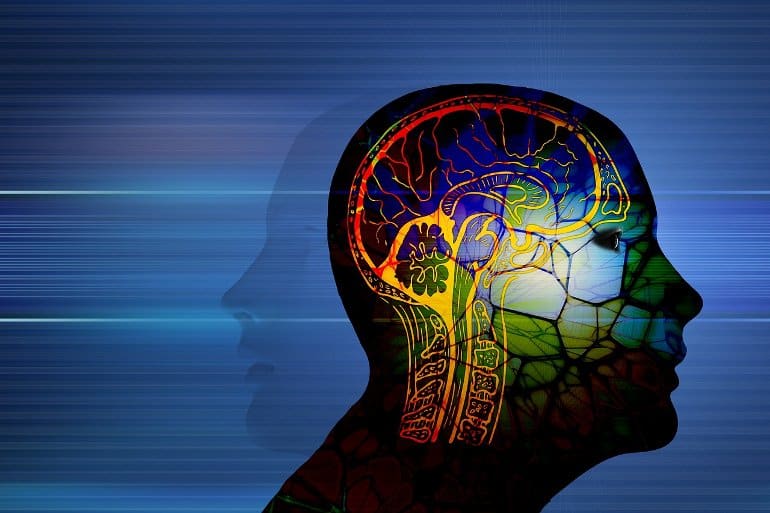Summary: The more a person is able to synchronize to a simple beat, the better they are at synchronizing their pupils with those of another person.
Source: Dartmouth College
How well you synchronize to a simple beat predicts how well you synchronize with another mind, according to a new Dartmouth study published in Scientific Reports.
Previous work has demonstrated that the pupil dilation patterns of speakers and listeners synchronize spontaneously, illustrating shared attention. The team set out to understand how the tendency to synchronize in this way may vary at the individual level and generalize across contexts, as it has been widely debated whether one form of synchrony bears any relationship to another.
“We were quite surprised to find that how well your pupils dilate and constrict to something as simple as a rhythmic beat would predict how well you attend in the same way as another person,” says lead author Sophie Wohltjen, who was a graduate student in psychological and brain sciences at Dartmouth at the time of the study and is now a postdoctoral researcher at University of Wisconsin-Madison.
“What this suggests is that there may be some sort of underlying mechanism that can unite a lot of the different ways that we talk about synchrony.”
The research was comprised of two studies. In the first study, individuals listened to a series of tones and were asked to indicate which one was softer than the others while their pupil responses were tracked.
Each individual completed this “oddball detection task” during nine separate sessions that were held on a different day and time for each session. The researchers found stable, individually-specific variation in the amount each person entrained to the oddball rhythm.
Some people’s pupils dilated strongly in time with the beat, others less so, and however strongly a person synchronized one day predicted how strongly they synchronized the next.
In the second study, 82 individuals completed the oddball task once and also listened to audio recordings of four emotional stories while their pupil responses were tracked. The storytellers’ pupil dilations were recorded earlier when they read the stories.
The researchers calculated the pupillary synchrony between the storyteller and listener and then compared this synchrony to how strongly the listener synchronized to the rhythmic beat of the oddball task.
The results demonstrate that the more someone entrained to the rhythmic beat of the task, the more likely they were to synchronize their pupils with those of the storyteller. As these individuals could not see the storyteller, pupillary synchrony could not be explained as simple visual mimicry. Instead, this synchrony was evidence that the storyteller and listener were attending to the story in the same way.

“Identifying that these two forms of synchrony—simple, metronomic entrainment and complex shared attention—are linked is really interesting, as it opens up all sorts of larger questions about why this tendency to synchronize varies between people,” says senior author Thalia Wheatley, the Lincoln Filene Professor in Human Relations and director of the Consortium for Interacting Minds at Dartmouth.
“Do musicians synchronize their attention more easily with others? Why are some people super-synchronizers while others are unable to synchronize altogether? Do strong synchronizers find it easier to click with others? These are all questions we plan to investigate further,” says Wheatley.
“This simple measure of being able to entrain to a beat could have clinical implications for autism and other disorders, which are not only about having difficulty with social interaction but are also about timing,” adds Wheatley.
The research on synchrony to a beat builds on the team’s earlier work, which finds that making and breaking eye contact is linked to fluctuations of pupillary synchrony between conversation partners and makes conversation more engaging.
About this neuroscience research news
Author: Amy Olson
Source: Dartmouth College
Contact: Amy Olson – Dartmouth College
Image: The image is in the public domain
Original Research: Open access.
“Synchrony to a beat predicts synchrony with other minds” by Sophie Wohltjen et al. Scientific Reports
Abstract
Synchrony to a beat predicts synchrony with other minds
Synchrony has been used to describe simple beat entrainment as well as correlated mental processes between people, leading some to question whether the term conflates distinct phenomena.
Here we ask whether simple synchrony (beat entrainment) predicts more complex attentional synchrony, consistent with a common mechanism.
While eye-tracked, participants listened to regularly spaced tones and indicated changes in volume. Across multiple sessions, we found a reliable individual difference: some people entrained their attention more than others, as reflected in beat-matched pupil dilations that predicted performance.
In a second study, eye-tracked participants completed the beat task and then listened to a storyteller, who had been previously recorded while eye-tracked. An individual’s tendency to entrain to a beat predicted how strongly their pupils synchronized with those of the storyteller, a corollary of shared attention.
The tendency to synchronize is a stable individual difference that predicts attentional synchrony across contexts and complexity.






